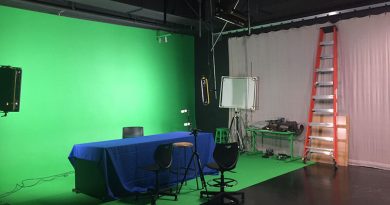Look at all aspects of funding when considering a CTE program
Many high school production advisers have Career & Technical Education (CTE) programs.
“Career and technical education is a term applied to schools, institutions, and educational programs that specialize in the skilled trades, applied sciences, modern technologies, and career preparation,” according to edglossary.org.
My program has qualified for CTE funding since 2005 at my principal’s suggestion.
When I asked for textbooks, computers, and other items needed for a successful newspaper program, he suggested I look into the technical education path.
When most of us in education hear about funding, the immediate response is positive. The money always helps, but the requirements for CTE qualification and annual renewal are steep. Below are some thoughts about my experience as a CTE instructor in Idaho for 12 years. The list feels incomplete to me, because there’s really too much to put into a readable document, but the following might help someone who is considering applying for CTE certification.
Some positive aspects of high school CTE programs
- CTE funding pays for state-of-the-art technology required to prepare students for post-secondary education and employment.
- Programs are usually required to offer dual enrollment credit or have a tech prep agreement with a post-secondary institution (students can earn credit toward college in high school).
- Students follow a schedule, called a pathway, in graphic design, commercial / digital photography, journalism, for example. The path is developed in a logical sequence mapped by approved curriculum–for example, mine goes from beginning journalism to news production 1, 2 & 3.
- Students learn skills and knowledge in a professionally driven atmosphere.
- Programs are required to have an advisory panel of industry experts that meet twice a year.
- The program must enroll students in an approved Career Student Organization (In Idaho, these are SkillsUSA, BPA, DECA, TSA, FCCLA, & HOSA ). These CSTOs have regional, state, and national officers and competitions.
- A five-year budget, a demographic of students, a post-graduation report, and a third-party assessment must be turned in annually.
- State and national legislation sometimes favors technical programs, because they more directly supply workers for the economy.
- Your school is required to provide space and other general support for the program. CTE funding can be used to purchase technical equipment, services, travel, and office supplies (but it can’t be used for printing a newspaper, for example). You’ll want to find out how the money can be used specifically for your program and for your state.
Some feedback to consider before becoming a CTE program
- With the ever changing landscape of education, allocation of the money from year to year fluctuates. Depending on your local organization, budget approval can be dependent on factors outside of your control, such as
- how many hours (class periods) you teach CTE courses,
- how many students enroll in your classes,
- whether the correct number and order of courses can fit into your school district’s curricular requirements,
- whether the district in which you work is tech-ed friendly; for example, does your building principal mind that you have two leaders to serve — both the building and the CTE principals? This may be tricky on in-service days.
- Although there is a national agenda, each state has developed into a different animal and each local district enforces even stricter guidelines.
- There is no particular formula for preparing yourself for what to expect. For example,
- people in charge change;
- interpretations of the requirements are difficult to compare from state to state;
- annual reports take extra time out of your work day (although usually manageable);
- summer conferences must be attended even though you personally receive no renumeration; and
- your building principal might be under pressures (enrollment numbers, for example) that conflict with CTE requirements.
- There is no particular formula for preparing yourself for what to expect. For example,
- Career and Technical Student Organizations (professional student organizations) are required.
- JEA is not an approved CSTO for any state’s career and technical education program
- For that reason, if you are a strong supporter of what JEA has to offer, it doesn’t count as a CSTO for your CTE program.
- You must juggle what you want your students to do in JEA, and you also need to sign them up for an approved CSTO.
- I tried every CSTO for which Idaho approves, and I never felt comfortable or “at home” at any of the conferences (I always felt like my students should be reporting about the conferences versus participating in them).
- In the approved CSTOs, advisers have to cherry pick contests in which their students can participate. It’s enough, but it always feels like fitting a square peg into a round hole–it never feels right. If you can tolerate this feeling, you’ll be okay.
- JEA is not an approved CSTO for any state’s career and technical education program
Without supplying an endless list of pointers, observations, and suggestions, the best advice I have is to talk to someone in your state that has a program like the one you want to qualify.
This is the best tip for learning how to apply, to receive an approved program, and to maintain annual qualifications.





